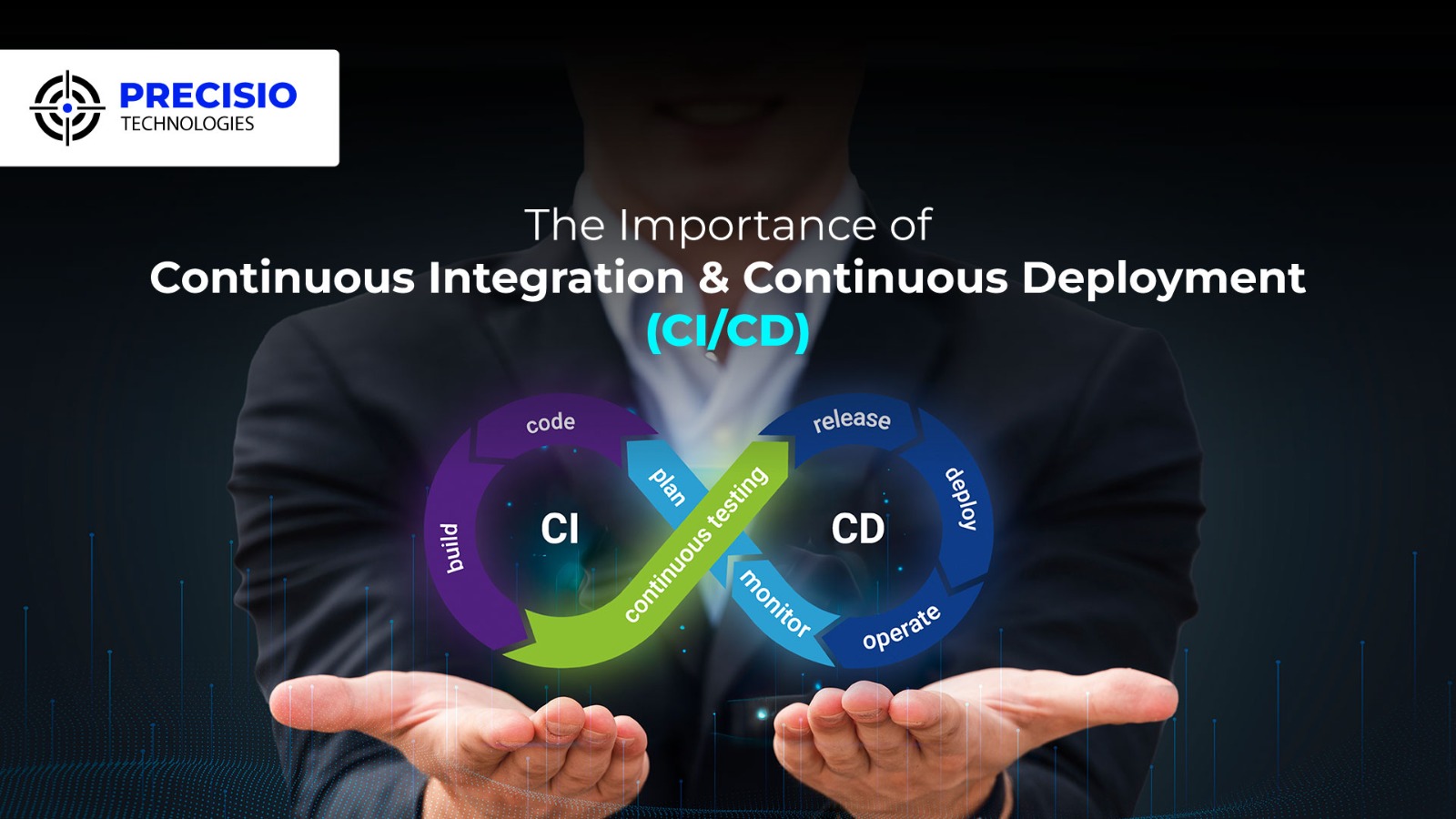
What is Continuous Integration (CI)?
The continuous CI software development concept is the practice of having developers constantly integrate their code changes into a shared repository. The CI’s purpose is to locate and eradicate bugs when the processes are being developed in order to improve code quality and tackle problems that happen in the integration process.
CI involves several key components: CI involves several key components:
- Source Control Management (SCM): Management of code changes and controlling the version history is the cornerstone of CI. This is the job of these SCM systems like git.
- Build Automation: Automatizing instructions involves compiling and building the code to make sure it properly functions.
- Automated Testing: With unit tests, integration tests, plus other automated tests, the code is assured of proper behaviors.
- Code Repository: A remote location where the codebase is kept and access control is implemented which is something like GitHub, GitLab, and Bitbucket.
- Pipeline: An automated procedure to be performed by the operating standards of the existing procedures, which include the stages of build, test, and deployment.
Benefits of Continuous Integration
- Faster Identification of Defects: Frequent code integration eliminates the possibility of issue escalation where the later resolution is harder and more expensive.
- Improved Code Quality: Through the help of automated testing and code reviews, teams guarantee that only code of high quality makes it to the main branch.
- Enhanced Collaboration: Programmers describe and execute each of the program’s tasks individually. This leads to better communication and collaboration.
- Reduced Integration Problems: By introducing integrations on a regular basis, the possibility of code changes that clash with each other is reduced drastically, resulting in a more successfully executed development schedule.
Popular CI Tools
Several CI tools facilitate the implementation of Continuous Integration:
- Jenkins: An open-source automation server widely used for building, deploying, and automating software projects.
- Travis CI: A cloud-based CI service that integrates with GitHub repositories.
- CircleCI: A CI/CD tool that automates the build, test, and deployment processes.
- GitLab CI/CD: A part of GitLab, this tool offers seamless integration with the GitLab platform for managing the entire DevOps lifecycle.
What is Continuous Deployment (CD)?
CD implies a procedure of automated deployment of every change made to be tracked in the production pipeline that passes all stages of production flow. Now, these processes increase the benefit of Continuous Delivery and guarantee that the software can be released at any time when it is needed.
CD involves deploying code changes to production environments without manual intervention, emphasizing:
- Deployment Pipeline: A series of automated steps that deploy the code to different environments.
- Artifact Management: Storing and managing build artifacts (compiled code, configuration files, etc.) that are deployed.
- Rollback Mechanisms: Ensuring that any problematic deployment can be quickly reverted to a previous stable state.
- Environment Provisioning: Automating the setup of testing, staging, and production environments.
Benefits of Continuous Deployment
- Accelerated Time to Market: Automated deployments mean new features and fixes reach users faster.
- Reduced Manual Errors: Automation reduces the risk of human error during the deployment process.
- Immediate Feedback: Real-time user feedback helps developers address issues promptly.
- Enhanced Reliability: Frequent, smaller releases are less risky and easier to troubleshoot than large, infrequent updates.
Best Practices for CI/CD Implementation
To successfully implement CI/CD, consider the following best practices:
- Automate Everything: From code integration to deployment and testing, automation is key. Use tools like Jenkins, GitLab CI/CD, and Docker for build automation and containerization.
- Adopt a Robust Testing Strategy: Incorporate unit tests, integration tests, acceptance tests, and regression testing into your CI/CD pipeline.
- Ensure Continuous Monitoring: Implement monitoring and alerting systems to track the health of deployments and quickly identify issues.
- Use Feature Toggles: Manage feature releases effectively by toggling features on or off without deploying new code.
- Implement Security Testing: Integrate security testing within the CI/CD pipeline to identify and address vulnerabilities early.
- Maintain Code Quality: Use tools for static and dynamic code analysis, linting, and code coverage to ensure high-quality code.
- Adopt Agile and DevOps Practices: Promote agile development methodologies and a DevOps culture to enhance collaboration and streamline workflows.
- Leverage Containerization and Microservices: Use Docker and Kubernetes to manage applications as microservices and ensure consistent environments.
Overcoming Challenges in CI/CD Implementation
Implementing CI/CD can come with several challenges:
- Cultural Resistance: Encourage a cultural shift towards DevOps by emphasizing collaboration and continuous improvement.
- Technical Hurdles: Address legacy systems and integrate modern tools to facilitate CI/CD practices.
- Security Concerns: Implement robust security measures and compliance testing to protect sensitive data.
- The complexity of Automation: Start small and gradually automate more parts of the pipeline to manage complexity.
Conclusion
Continuous Integration (CI) and Continuous Deployment (CD) are both a combination of practices that are able to shorten the software life-cycle. CI/CD is a product of its sort which automatizes the integration, testing, and deployment processes thus ensuring code quality, faster delivery, and fewer manual errors. The CI/CD implementation is a mix of suitable tools, shared ideas, and a change of mindset from one of static operations to that of a commitment to sustained improvement and teamwork.
At Precisio Technologies, we specialize in helping businesses implement and optimize CI/CD pipelines. Our expert team can guide you through the process, from tool selection and automation to monitoring and security. Embrace the future of software development with Precisio Technologies and achieve faster, more reliable releases.
Contact us today to learn how we can assist you in your CI/CD journey and transform your software development practices. Let’s innovate together!
